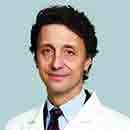Bats, Bugs and Babies
Bats are a natural pesticide. A single bat can eat between 6,000 and 8,000 insects in a night, depending on species and feeding habits. Since 2006, many bat populations in the U.S. have collapsed due to an invasive fungus found in caves they use.
As a result, farmers in affected areas have increased their use of pesticides with one unforeseen effect: an increase in human infant mortalities.
Scientists found that in areas with fewer bats and more pesticide use, the infant mortality rate rose almost 8%, the equivalent of 1,334 additional infant deaths. For every 1% increase in pesticides, there was a 0.25% increase in the rate.
"Bats have gained a bad reputation as being something to fear, especially after reports of a possible linkage with the origins of COVID-19," said study author Eyal Frank at the University of Chicago. "But bats do add value to society in their role as natural pesticides, and this study shows that their decline can be harmful to humans."
A Different Kind of Forever Chemical
The artificial sweetener sucralose (think Splenda) is used in zero-calorie foods and drinks because it cannot be broken down by the human digestive tract. Nor is it filtered out in wastewater treatment processing, which means it's found in drinking water and aquatic environments.
A lot of microorganisms can't break it down either. That has researchers wondering what will happen as sucralose builds up in the environment and potentially impacts microbial communities.
"There is the potential that the freshwater communities (of microorganisms) might be mistaking sucralose for a nutrient, for a sugar that they can use as food," said study author Amelia Westmoreland at the University of Florida.
Body of Knowledge
Like fingers and dogs' noses, every human tongue print is unique to that person.
Get Me That, Stat!
More women (17.1%) than men (11.7%) have trouble falling asleep. Similarly, 20.7% of women have trouble staying asleep, compared to 14.7% of men, according to the ongoing National Health Interview Survey.
Counts
1 in 10: Ratio of children who live in households that have experienced food insecurity. Prevalence was higher among certain races and Hispanic-origin groups (Source: National Center for Health Statistics).
Doc Talk
Eructation: The act of burping
Mania of the Week
Toxicomania: A morbid desire for poisonous substances, presumably short-lived
Best Medicine
It's estimated there are more than 1 billion people in the world who are living with obesity. Of course, these are only round figures.
Observation
"A doctor's reputation is made by the number of eminent men who die under his care." -- Irish playwright George Bernard Shaw (1856-1950)
Medical History
This week in 1952, the sun reappeared over London after four days of dense killer smog. The air pollution was linked to at least 4,000 deaths, partly due to transportation chaos as visibility was reduced to a few hundred yards. While the London Underground maintained service, all surface traffic, including ambulances, ground to a halt with massive congestion. Health-related deaths hit the elderly, the very young and those with medical problems. The cause of the smog was coal-burning, prompting the Clear Air Act of 1956.
Perishable Publications
Many, if not most, published research papers have titles that defy comprehension. They use specialized jargon, complex words and opaque phrases like "nonlinear dynamics." Sometimes they don't, yet they're still hard to figure out. Here's an actual title of actual published research study: "Determinants and Consequences of Female Attractiveness and Sexiness: Realistic Tests with Restaurant Waitresses."
Published in 2009 in the Archives of Sexual Behavior, the researchers surveyed waitresses to determine what physical attributes were most admired by male customers. Their findings were not surprising.
Sum Body
Unlike our emotions, everybody is both thick- and thin-skinned. Epidermal thickness depends on body site, age, gender, skin type, pigmentation, blood content and -- yikes -- smoking habits. Smoking can thin skin around the mouth and face.
Body regions with thick skin tend to be palms of hands, soles of feet and back. Regions with thin skin are genitals, neck, face, inner lining of the mouth and eyelids, which are the thinnest at less than 1 millimeter, which is less than the thickness of a typical credit card.
Medical Myths
Tryptophan is an amino acid involved in sleep and mood control. It can, in large enough doses, cause drowsiness. Like humans, other animals and plants, turkeys contain tryptophan, and it's often touted that eating a lot of turkey causes drowsiness.
Well, turkeys don't contain that much tryptophan. Pork and cheese have higher levels. And eating turkey in combination with other foods tends to limit its absorption. Sleepiness after a large turkey meal is more likely the result of reduced blood flow and oxygenation to the brain as the digestive system gets to work. A few glasses of wine may also play a role.
Last Words
"Now, farewell, and remember all my words!" -- Greek philosopher Epicurus (341-270 B.C.), who opined that people should strive for simple, equitable lives. Ironically, of the estimated 300 works said to be written by him, only three letters and a few writing fragments survive.
========
To find out more about Scott LaFee and read features by other Creators Syndicate writers and cartoonists, visit the Creators Syndicate website at www.creators.com.
Copyright 2024 Creators Syndicate Inc.









Comments